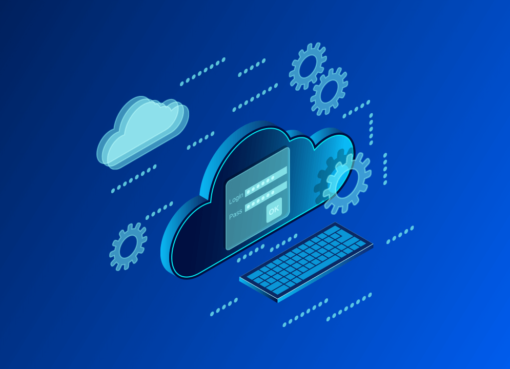How Is Big Data Transforming Industries and Shaping the Future?

In the digital era, data has become one of the most valuable assets for businesses, governments, and individuals alike. As the volume of data continues to grow exponentially, Big Data is emerging as a game-changing force that is revolutionizing industries across the globe. Big Data refers to vast datasets that are too complex for traditional data-processing methods, and it involves the use of advanced analytics tools to extract meaningful insights from this data. From healthcare and finance to manufacturing and retail, Big Data is not just a trend—it is reshaping industries, driving efficiencies, enhancing customer experiences, and enabling new business models.
This article explores how Big Data is transforming industries and shaping the future by enhancing decision-making, driving innovation, and creating new opportunities.
Understanding Big Data
Before diving into its impact on various industries, it’s important to understand what Big Data is and how it is classified. Big Data is typically defined by the “3 Vs”:
- Volume: The sheer amount of data being generated.
- Velocity: The speed at which data is being generated and processed.
- Variety: The different types of data (structured, semi-structured, and unstructured) being generated from diverse sources.
In addition, Big Data is often associated with advanced analytics tools, such as machine learning, artificial intelligence (AI), and data mining techniques, that allow organizations to make sense of this enormous amount of data. By using these technologies, businesses can derive actionable insights, improve performance, and predict trends that were previously unthinkable.
How Big Data is Transforming Various Industries
1. Healthcare
Big Data is revolutionizing the healthcare industry by improving patient care, streamlining hospital operations, and enabling predictive analytics for disease outbreaks. Healthcare providers are leveraging Big Data to analyze patient records, research clinical trials, and track disease patterns. By utilizing data from wearable devices, hospitals, and mobile applications, healthcare providers can now offer personalized treatment plans based on individual patient needs, leading to better outcomes.
- Benefits:
- Predictive Analytics: Helps predict outbreaks, prevent hospital readmissions, and manage chronic diseases.
- Improved Patient Care: Real-time monitoring through wearable devices enhances personalized treatment.
- Operational Efficiency: Optimizing hospital workflows and reducing unnecessary costs.
2. Retail
Retailers are increasingly using Big Data to understand consumer behavior, predict demand, and improve inventory management. By analyzing data from customer transactions, online shopping patterns, and social media activity, businesses can gain deeper insights into their customers’ preferences. This enables them to tailor their offerings, create personalized marketing campaigns, and optimize supply chains to ensure they meet customer demands effectively.
- Benefits:
- Personalized Marketing: Retailers can design targeted campaigns based on consumer behavior.
- Inventory Optimization: Big Data helps predict trends and optimize stock levels, reducing waste.
- Customer Loyalty: By understanding customer preferences, businesses can improve customer loyalty and satisfaction.
3. Finance
The financial industry has been one of the earliest adopters of Big Data. Banks and financial institutions use Big Data to analyze vast amounts of transaction data, detect fraud, assess credit risk, and optimize trading strategies. Predictive analytics is also helping in identifying new investment opportunities and managing financial portfolios with greater precision.
- Benefits:
- Fraud Detection: Algorithms analyze transactions in real time to detect and prevent fraudulent activity.
- Risk Assessment: Big Data helps improve credit scoring and risk analysis models.
- Improved Customer Insights: Banks can offer personalized products and services to customers based on their financial behavior.
4. Manufacturing
Big Data is having a significant impact on manufacturing, particularly in the area of predictive maintenance, supply chain management, and production optimization. By collecting data from sensors embedded in machinery and production lines, manufacturers can predict when a machine is likely to break down, reducing downtime and improving productivity. Additionally, Big Data can help optimize production schedules and supply chain processes, leading to cost savings and more efficient operations.
- Benefits:
- Predictive Maintenance: Reduces unexpected downtime by predicting equipment failures before they happen.
- Optimized Production: Ensures production is running at its most efficient, reducing costs.
- Supply Chain Optimization: Helps forecast demand and streamline procurement processes.
5. Transportation and Logistics
Big Data is transforming the transportation and logistics industry by improving route planning, reducing fuel costs, and enhancing fleet management. Companies use data from GPS devices, traffic patterns, and weather forecasts to optimize delivery routes and minimize delays. In addition, Big Data allows logistics companies to track shipments in real-time and enhance inventory management systems.
- Benefits:
- Optimized Routing: Reduces fuel costs and delivery times by identifying the most efficient routes.
- Real-time Tracking: Increases visibility across the supply chain and improves customer satisfaction.
- Cost Efficiency: Reduces operational costs by improving fleet management.
6. Education
In education, Big Data is helping institutions better understand student performance, improve teaching strategies, and predict student success. By analyzing data from student assessments, participation, and engagement, educational institutions can provide tailored learning experiences and support services. Additionally, Big Data helps in monitoring attendance, detecting patterns of at-risk students, and intervening before issues arise.
- Benefits:
- Personalized Learning: Allows educators to tailor lessons based on student performance.
- Predictive Analysis: Helps identify students at risk of falling behind and provides timely interventions.
- Enhanced Learning Outcomes: Promotes better understanding and retention by focusing on individual learning needs.
7. Telecommunications
Telecom companies are using Big Data to improve network optimization, customer service, and business operations. By analyzing call records, service usage, and customer complaints, telecom providers can better understand customer needs and offer more personalized services. Additionally, Big Data is used to optimize the network, predict future traffic, and plan for capacity upgrades.
- Benefits:
- Improved Customer Experience: Tailors services based on customer data to enhance satisfaction.
- Network Optimization: Ensures the network is optimized for speed and reliability.
- Predictive Maintenance: Anticipates potential service interruptions and reduces downtime.
Key Technologies Driving Big Data
To harness the power of Big Data, businesses rely on advanced technologies, including:
- Artificial Intelligence (AI): AI algorithms help analyze large datasets, identify trends, and make predictions.
- Machine Learning (ML): Machine learning models enable systems to learn from data and improve over time without human intervention.
- Cloud Computing: Cloud platforms provide scalable storage and processing power, making Big Data analysis more accessible and cost-effective.
- Internet of Things (IoT): IoT devices generate massive amounts of data that can be analyzed for real-time decision-making.
- Data Visualization: Tools like Tableau and Power BI help turn raw data into actionable insights by presenting it visually.
7 FAQs About Big Data
- What is Big Data?
Big Data refers to extremely large datasets that can be analyzed to uncover hidden patterns, correlations, and trends. It typically involves high volume, velocity, and variety of data. - How does Big Data benefit businesses?
Big Data helps businesses make more informed decisions, improve operational efficiency, understand customer behavior, and predict future trends. - What industries benefit from Big Data?
Industries such as healthcare, retail, finance, manufacturing, education, and telecommunications benefit significantly from Big Data. - What are the challenges of Big Data?
Some challenges include data privacy concerns, integration of data from various sources, ensuring data quality, and managing the infrastructure required for processing Big Data. - What is the difference between Big Data and traditional data?
Traditional data is typically structured, smaller in volume, and easier to manage, while Big Data is large, complex, and often unstructured, requiring advanced analytics tools for processing. - How is Big Data used in healthcare?
Big Data in healthcare is used to analyze patient data, improve treatment plans, predict disease outbreaks, and enhance hospital efficiency. - Is Big Data the same as Big Analytics?
No, Big Data refers to the vast amount of data itself, while Big Analytics involves using advanced tools and techniques to analyze and derive insights from that data.
Conclusion
Big Data is no longer a buzzword; it is a transformational force that is reshaping industries and influencing the way businesses and organizations operate. From healthcare and finance to education and transportation, Big Data is enabling companies to make smarter decisions, reduce costs, enhance customer satisfaction, and develop innovative solutions. As technology continues to evolve, the potential of Big Data will only grow, creating new opportunities and challenges for industries worldwide.
Key Takeaways
- Big Data involves vast amounts of data that require advanced analytics tools to extract valuable insights.
- Industries such as healthcare, retail, and finance are using Big Data to improve operations, enhance customer experiences, and predict future trends.
- Technologies like AI, machine learning, and cloud computing are key enablers of Big Data analytics.
- The future of Big Data holds immense potential for driving innovation, optimizing operations, and creating new business models.
Understanding and harnessing the power of Big Data is crucial for businesses aiming to stay competitive in today’s fast-paced digital landscape. By leveraging this valuable resource, organizations can position themselves for success in the future.




Leave a Comment